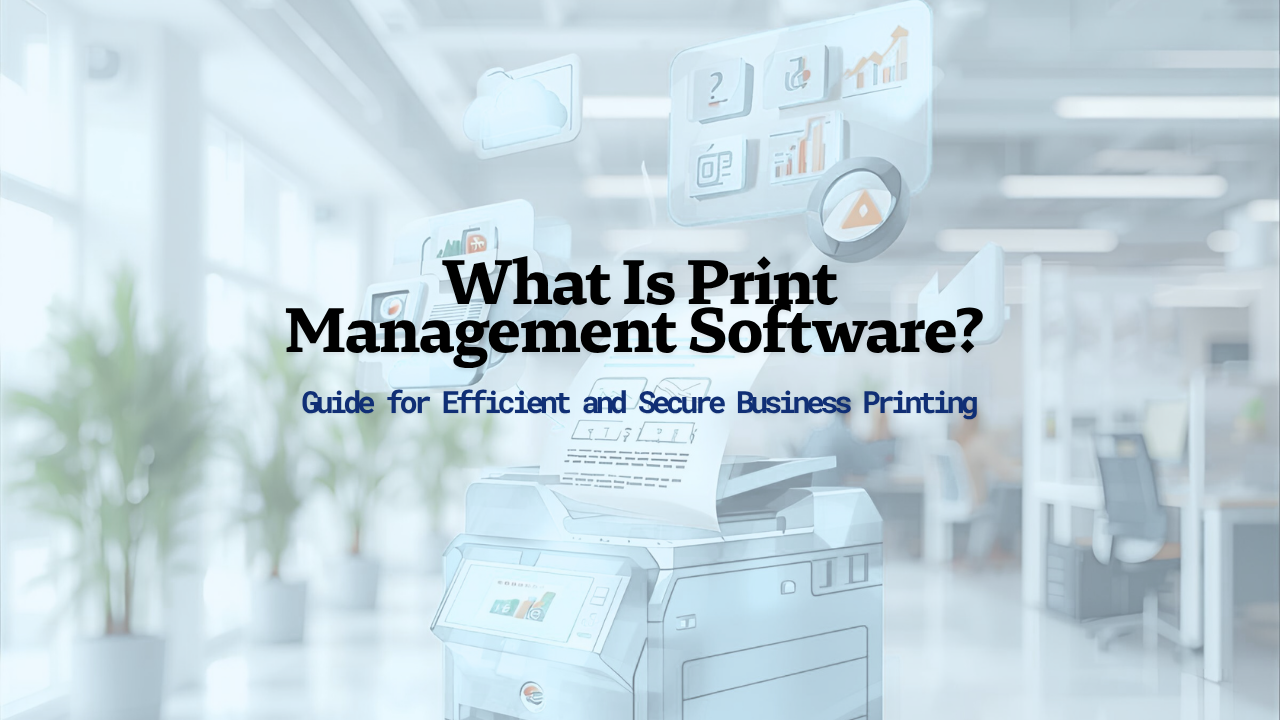Understanding the Critical Role of Document Versioning in Data Protection
In today’s digital landscape, data loss can have catastrophic consequences for organizations. Implementing robust document versioning strategies is essential for safeguarding information, maintaining document integrity, and ensuring compliance. This article explores best practices, key features, and strategic approaches to prevent data loss through comprehensive document version control.
Implementing Automated Version Control with Leading Platforms
What are the best practices for implementing document version control systems?
For organizations aiming to streamline their document management, leveraging automated version control systems is essential. Using leading platforms like Microsoft 365, Google Workspace, or dedicated content management solutions provides robust tools for tracking and managing document revisions.
Choosing suitable software such as Microsoft 365 or Google Workspace allows teams to automatically record changes, attach timestamps, note user identities, and assign sequential or descriptive version numbers. This automation minimizes manual errors and helps maintain a clear history of document modifications.
Utilizing cloud storage solutions enhances these capabilities by enabling real-time synchronization, ensuring that every change is instantly saved and archived. This makes it easier to access previous versions, compare edits, and revert if necessary.
Automating change recording involves capturing who made the change, when it occurred, and what specific modifications were applied. Such detailed audit trails support accountability, regulatory compliance, and collaborative work.
Best practices include establishing consistent naming conventions—which may include date stamps, version numbers, and initials—to simplify navigation and identification of document revisions.
Implementing secure access controls and permissions is vital to prevent unauthorized modifications or viewing. Regularly reviewing version histories and maintaining archived older versions help keep the document repository organized and free from clutter.
Encouraging a collaborative environment with features like inline comments and approval workflows streamlines review processes.
Overall, adopting these practices ensures efficient, secure, and transparent version control, ultimately supporting organizational productivity and compliance.
Systematic Version Numbering and Naming Conventions

What is document version control and why is it important?
Document version control is the systematic management of multiple iterations of a document throughout its lifecycle. It ensures that everyone accessing the document works with the most current version while also maintaining a complete history of all changes made over time.
This process is crucial for maintaining accuracy, accountability, and smooth collaboration within organizations. It helps prevent errors such as accidental overwrites, data loss, and working on outdated versions. By tracking revisions meticulously, organizations can ensure compliance with regulatory standards and improve overall efficiency.
Implementing effective version control involves automated change tracking, clear version numbering, timestamps, and audit logs. These features foster transparency, making it easier for teams to review, approve, and revert to previous versions if necessary.
Best practices include establishing consistent naming conventions and access controls, utilizing automated workflows, and adopting cloud-based tools that facilitate real-time updates. Such measures are especially vital in remote or hybrid work environments where multiple users access documents across different locations.
Using structured version numbering systems—such as v1.0 for initial releases, v1.1 for minor revisions, and v2.0 for major updates—helps clarify the stage of each document. Including relevant metadata like project name, document type, creation date, and creator initials in file names further enhances organization.
Standardized naming protocols streamline document retrieval and promote clear history tracking. For example, filenames like "ProjectX_Specs_v1.2_2024-03-15_JD" immediately convey key details, reducing confusion and saving time.
In summary, thorough version numbering and consistent naming conventions are foundational to effective document management. They safeguard the integrity of information, support regulatory compliance, and significantly improve operational workflows.
Archiving and Managing Outdated Versions

How does document versioning contribute to data protection and integrity?
Document versioning plays a crucial role in safeguarding data and maintaining its integrity. By systematically tracking every change, including who made it and when, organizations build a detailed history of each document. This record allows quick restoration to previous, error-free versions if mistakes, unauthorized edits, or accidental deletions occur.
With features like automated backups, locking documents during edits, and stringent access controls, versioning minimizes risks related to data breaches, corruption, or loss. It ensures that only authorized personnel can modify or view certain versions, adding an extra layer of security.
The audit logs provided by version control systems not only help in tracking modifications for accountability but also fulfill compliance requirements in regulated industries. By maintaining a comprehensive change history, organizations can defend the integrity of their documents and demonstrate adherence to legal standards.
In essence, document versioning acts as a safety mechanism, providing resilience against data errors and supporting overall data security throughout a document’s complete lifecycle.
Regularly reviewing version histories to identify and archive obsolete files
A vital practice in maintaining organized document repositories is the regular review of version histories. This process helps identify outdated or obsolete versions that no longer serve current operational needs.
By systematically examining these histories, teams can determine which older versions should be archived or deleted, reducing clutter and improving system efficiency. Archived versions are stored securely, often in a separate, protected storage area, ensuring historical data remains accessible for future reference or audits.
Implementing routine reviews also enables organizations to verify that only relevant and current documents are actively used, minimizing confusion and improving workflow.
Implementing archiving policies that store historical documents securely
Effective archiving policies define how and where older document versions are stored. These policies specify criteria for archiving, such as age, relevance, or project phase, and establish protocols for data retention and secure storage.
Data security is paramount; hence, archived documents should be stored in encrypted formats within protected environments that control access through role-based permissions. Cloud-based or on-premises solutions can be employed, depending on organizational needs.
Archiving not only preserves historical data for compliance and audits but also reduces the load on active systems, enhancing performance and manageability.
Preventing system clutter by limiting active versions and transferring outdated ones to secondary storage
To prevent system clutter and optimize storage capabilities, organizations should limit the number of active versions stored in primary repositories. This can be achieved through version management settings that cap the maximum number of recent versions.
Outdated or less frequently accessed versions are transferred to secondary storage or archive solutions. This approach frees up space, improves system responsiveness, and simplifies version management.
Automated policies can be set up to routinely move older versions to secondary storage based on age or version count thresholds, ensuring an organized and efficient document management environment.
Enhancing Document Security and Access Control
Implementing robust security measures is vital to protect sensitive documents and maintain data integrity. One essential strategy is applying role-based access controls (RBAC). This approach restricts document editing and viewing rights based on user roles, ensuring that only authorized personnel can make changes or view confidential information. For example, limiting editing privileges to project managers while allowing team members read-only access helps prevent accidental or malicious modifications.
Enforcing encryption protocols, such as AES-256, provides an additional layer of security. Encryption secures data at rest—stored files—and during transfer across networks. This prevents unauthorized access even if data is intercepted or compromised.
Furthermore, deploying multi-factor authentication (MFA) adds an extra verification step when accessing documents or systems. MFA requires users to confirm their identity through multiple methods, such as a password combined with a temporary code sent to their mobile device. This significantly reduces the risk of unauthorized access due to compromised credentials.
What strategies and tools can help prevent data loss through document versioning?
To prevent data loss, organizations should utilize automated version control systems that systematically track and manage document changes. Regular backups, both physical—like external hard drives—and cloud-based solutions, enable quick recovery after accidental deletions or corruption. Trusted software platforms such as Adobe Acrobat Pro enhance security through features like autosave, metadata management, and redaction, safeguarding data privacy.
Maintaining multiple copies of critical documents across different locations minimizes the risk of total data loss. Data recovery tools, such as EaseUS Data Recovery Wizard, can assist in retrieving lost files, while repair tools help fix corrupted documents. Combining these practices creates a comprehensive strategy to ensure data resilience.
In conclusion, adopting strict access controls, encryption, multi-factor authentication, and reliable backup and recovery solutions collectively fortify document security, reducing the likelihood of data loss and ensuring business continuity.
Leveraging Collaboration and Commenting Features in Document Management

How can built-in comments, annotations, and review workflows within document management systems enhance collaboration?
Modern document management systems (DMS), such as Google Workspace and Microsoft 365, provide integrated tools to facilitate efficient collaboration. Users can leave comments directly within documents, offering feedback or clarification without altering the main content. Annotations allow for highlights, notes, and markups, streamlining the review process.
Review workflows automate the process by routing documents to relevant team members for approval, ensuring that comments are addressed systematically. These features collectively reduce miscommunication, accelerate approval cycles, and maintain a clear record of revisions.
Including comments and annotations in the document's history ensures that all feedback is preserved, making it easier to track changes over multiple review cycles. This integration supports transparent teamwork and helps keep everyone on the same page, ultimately leading to higher productivity and better-quality outputs.
How can permissions be configured to control commenting and editing rights?
Controlling access is crucial for maintaining the integrity of organizational documents. Most DMS platforms allow administrators to finely tune permissions, specifying who can comment, edit, or only view documents.
For instance, permissions can be set so that only designated team members can make edits, while others are limited to commenting or viewing only. This prevents unauthorized modifications and ensures that sensitive information remains protected.
In legal or compliance-heavy environments, restricting editing rights while allowing comments can streamline review processes without risking accidental changes. Proper permission settings can also enable trusted reviewers to provide input while maintaining control over the document.
How can feedback and revisions be tracked through integrated tools?
Tracking feedback efficiently is essential for smooth document revisions. Many DMS platforms incorporate tools that log comments, track change history, and display revision status.
Automated change logs record what modifications were made, by whom, and when, offering a comprehensive audit trail. Integrated review tools notify authors of new comments or suggested edits, prompting timely responses.
This seamless tracking minimizes the risk of overlooked feedback and facilitates quick resolution of issues. Once revisions are incorporated, the system can update the version, preserving the history of changes, which simplifies compliance and accountability.
| Feature | Function | Benefits |
|---|---|---|
| Built-in Comments | Allows users to leave feedback directly in documents | Enhances communication, maintains context |
| Annotations | Supports highlights and markups | Clarifies points needing attention |
| Review Workflow Automation | Routes documents for approvals | Streamlines approval process |
| Permission Settings | Controls comment and edit rights | Protects sensitive information |
| Change Tracking | Logs revisions and feedback | Ensures full accountability |
Implementing these collaborative features effectively transforms document management into a dynamic, transparent, and secure process, fostering collaboration while safeguarding organizational data.
Automated Backup and Disaster Recovery Measures
 Implementing comprehensive backup and disaster recovery plans is crucial for safeguarding valuable documents and data. Regularly scheduling backups of document repositories ensures that up-to-date copies are available in case of accidental deletion, corruption, or system failures. It's essential to establish a routine, such as daily or weekly backups, to minimize data loss and facilitate quick restoration.
Implementing comprehensive backup and disaster recovery plans is crucial for safeguarding valuable documents and data. Regularly scheduling backups of document repositories ensures that up-to-date copies are available in case of accidental deletion, corruption, or system failures. It's essential to establish a routine, such as daily or weekly backups, to minimize data loss and facilitate quick restoration.
Distributing data across multiple geographical locations, known as geo-redundant storage, further enhances security. By storing copies in different regions, organizations reduce the risk of total data loss due to regional outages, natural disasters, or cyberattacks. This approach ensures business continuity even during extreme incidents.
Secure data transfer protocols and encryption protocols are fundamental to protect data at all stages. Using encryption standards like AES-256 during transfer and at rest prevents unauthorized access. Secure transfer methods such as VPNs or TLS/SSL encryption safeguard data in transit.
These measures collectively create a resilient environment that not only preserves data integrity but also quickly restores operations with minimal downtime. They are integral components of any effective document management strategy, aligning with industry best practices for data security and compliance.
What is data versioning and why is it important?
Data versioning involves creating and managing different copies or snapshots of datasets or documents over time. It allows organizations to track changes, compare versions, and restore previous states if needed. This capability is vital for maintaining data accuracy, supporting audits, and recovering from errors or malicious attacks. Different methods include duplicating datasets, adding metadata tags, or employing specialized version control systems. Overall, data versioning enhances trustworthiness and operational efficiency by ensuring reliable access to accurate historical data.
Continuous Monitoring and Compliance Enforcement
What are the key considerations when implementing electronic document management systems for version control?
Implementing an effective electronic document management system (EDMS) for version control requires careful planning and execution. A primary consideration is selecting software that offers comprehensive version tracking, audit logging, and conflict resolution capabilities. These features help ensure that all changes are accurately recorded, and that any discrepancies can be efficiently addressed.
Establishing clear policies is equally important. Organizations should develop standard operating procedures (SOPs) for naming conventions, document review, approval workflows, and access permissions. Consistent practices help maintain organized records and facilitate easy retrieval.
Metadata management and proper file naming conventions improve searchability and collaboration within the system. Security measures such as data encryption, role-based access control, and retention policies protect sensitive information and support regulatory compliance.
Engaging stakeholders early in the process, conducting pilot tests, and providing thorough training are essential for user adoption and system effectiveness. Additionally, regular audits and ongoing management practices help sustain system integrity, detect anomalies, and ensure adherence to legal and industry standards.
Overall, a combination of suitable technology, well-defined policies, and user engagement forms the foundation for successful version control and compliance in electronic document systems.
Ensuring a Secure Future Through Effective Versioning
Implementing a comprehensive document version control framework is critical for preventing data loss, ensuring document integrity, and enhancing organizational security. By adopting best practices such as automated systems, strict naming conventions, robust permissions, and regular backups, organizations can significantly mitigate risks related to human error, cyber threats, and system failures. Regular training, audits, and staying updated with technological advances further strengthen these safeguards. When effectively managed, document versioning not only preserves the accuracy and reliability of vital data but also supports compliance and operational efficiency, laying the foundation for a resilient future.
References
- Document Version Control: 5 Best Practices for Your Team
- 3. Maintaining Version Control on a Document
- Learn about data loss prevention - Learn Microsoft
- How versioning works in lists and libraries - Microsoft Support
- How to Prevent Data Loss in Cloud Storage: A Developer's Checklist
- The Ultimate Guide to Document Version Control - DocuWare
- Prevent Data Loss with Electronic Document Management
- 6 Common Document Version Control Mistakes to Avoid - Archbee




.png)

.png)
























